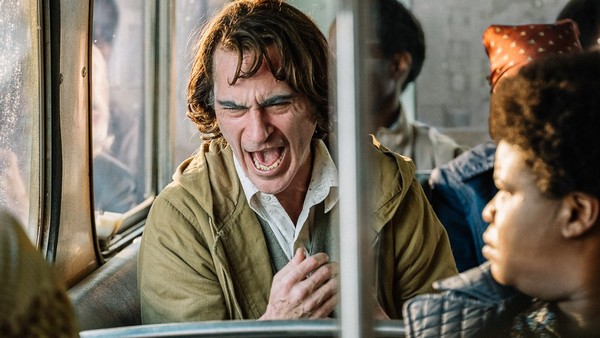10 Subtle Details That Make Joaquin Phoenix's Joker Incredible
The anatomy of an Oscar winner to be?
While it's obviously a comic book movie in a certain sense - in that it adapts one of the most famous comics characters of all time - Todd Phillips' Joker is more of a character piece. It's about one man's reaction to being downtrodden, abused, left to rot by a society over-run by self-interest and dehumanising greed. And that one man is played quite stunningly by Joaquin Phoenix.
If there's any justice in the world, Phoenix's performance will be considered right up there with Heath Ledger's in terms of quality. It is just as worthy of Oscar attention and it is arguably even more layered and more complex. Where Ledger had charitable mystery to hide behind, Phoenix had detail he had to fit into the characterisation.
What he has created is as subtle and nuanced as it is brutal and provocative and analysis of what he's done could and should run on for a long time. How he managed to do what he did is all about the intricacies of his observations and the little details you might not pick up first time.
SPOILERS will follow for Joker...
10. The FOUR Laughs

A lot was said about Joaquin Phoenix's approach to capturing the right laugh and how key he thought it was to even accepting the role. The most instantly infamous aspect of the laugh is also a huge part of the inspiration for the movie generally speaking - Todd Phillips showed him videos of people suffering with uncontrollable pathological laughter.
We see this particular laugh repeatedly - usually when Arthur is faced with adversity or social embarrassment or a perceived threat - and it causes him obvious physical pain. He doesn't just grimace, he claws at his neck, his throat convulses, his sinews twist as if this laughter is a psychosomatic punishment. When we learn the truth of his past, it fits even more that he would create such a response.
But it's not the only laugh we see: there are crucially three others that lend to the picture of Arthur as a performer of increasing layers. The final to be revealed is a variation on the pathological laughter, seen right at the end as Arthur considers the tragedy of the Waynes. He grimaces once more, but the pain is gone and he seems almost wistful, no longer fighting the impulse and genuinely enjoying "the joke" as he calls it.
Earlier, he tells his mother that his pathological laughter is when he is most himself and it would seem that this little flash of an evolved impulsive, pained laugh is his true Joker laugh.
The other two laughs sit at opposite ends of the performative spectrum, the first is his natural laugh, as anyone would have - his rare expression of joy that we see when he sees himself on Murray Franklin's show - and it's telling that this laugh matters the least. Arthur says he's never had a moment of happiness in his whole life, which is obviously untrue because we see it, but to him, happiness is a performance and he genuinely doesn't know what true happiness is even as he experiences it.
And finally we have what most people thought would be the Joker laugh, the shrill, jester laugh from the trailer that is Arthur's fake, performance laugh. He uses it when he believes it's right to, but he doesn't understand it as the first Pogos sequence confirms - his disconnection there manifests as him laughing away from the punchlines. He's performing to try and fit in.